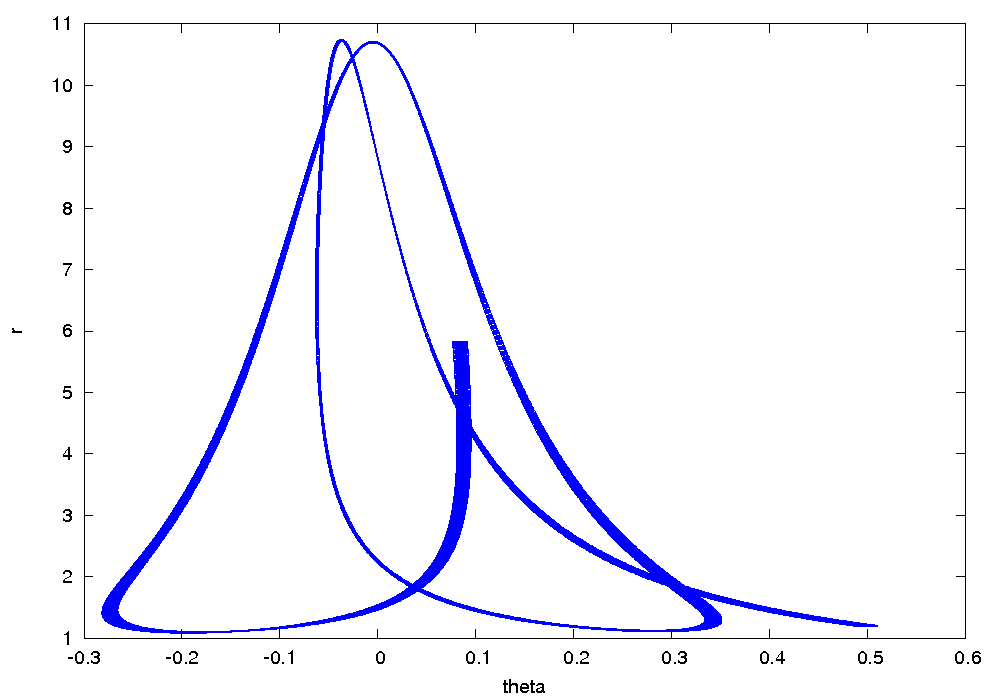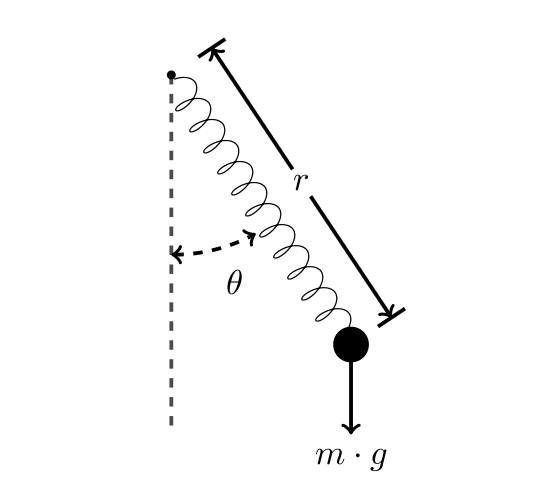Download
| Flow* | spring_pendulum.model |
Model description
We study the behavior of the planar spring-pendulum described in [1]. It consists of a solid ball of mass ![]() and a spring of natural length
and a spring of natural length ![]() . The spring constant is
. The spring constant is ![]() .
.
We study the evolutions of the length ![]() of the spring and the angle
of the spring and the angle ![]() between the spring and the vertical. They are modeled by the following differential equations
between the spring and the vertical. They are modeled by the following differential equations
![]()
which can be equivalently translated to the first-order ODE as below.
![Rendered by QuickLaTeX.com \[ \left\{ \begin{array}{lcl} \dot{r} & = & v_r \\ \dot{\theta} & = & v_\theta \\ \dot{v}_r & = & r\cdot v_\theta^2 + g\cdot \cos(\theta) - k\cdot (r - L) \\ \dot{v}_\theta & = & -\frac{(2\cdot v_r \cdot v_\theta + g\cdot \sin(\theta))}{r} \\ \end{array} \right. \]](https://ths.rwth-aachen.de/wp-content/ql-cache/quicklatex.com-e58cd02ede3eeb3ba5b8ad2132df20ff_l3.png)
The constants are set as ![]() ,
, ![]() , and
, and ![]() .
.
Reachability settings
We consider the initial set ![]() ,
, ![]() ,
, ![]() and
and ![]() .
.
Results
The following figure shows an overapproximation computed by Flow* for the time horizon ![]() .
.

